For the past few months, I have had the opportunity to work as an intern in the manuscripts department here at the American Antiquarian Society. Usually, I spend my days the digitizing department working as a liaison between AAS and our vendors, paging newspapers and serials. I jumped at the chance to work in manuscripts and learn a little more about a different part of our collections.
I started my internship working with the miscellaneous oversized manuscripts. My task was to sort through the box, pull out items that needed different housing, and identify any items that should get their own catalog record. One item particularly caught my eye: a large, undated, hand-written document addressed to the New York state legislature signed by one DeWitt Clinton. Reading through the document without any context, it seemed as though Clinton was calling for less funding for New York public schools; but I knew there was more to the story, and in any case, I needed to figure out when the document was created to catalog it. So, with the permission and encouragement of manuscript curator (and my internship supervisor) Ashley Cataldo, I dove into the world of early 19th-century New York public education.
(Document from DeWitt Clinton addressed to the New York state legislature, undated.)
DeWitt Clinton (b. 1769- d. 1828) was a prolific New York politician and philanthropist. Clinton served as a New York state senator (1798-1802, 1806-11), a United States senator (1802-03), mayor of New York (1803-07, 1808-10, 1811-15), lieutenant governor of New York (1811-13), and governor of New York (1817-22). Clinton also served on the Erie Canal Commission from 1810 to 1824 and was instrumental in the construction and completion of the Erie Canal. (He was also elected as a member of the American Antiquarian Society in 1814 and was voted vice president in 1821.) Clinton was a staunch supporter of public education. He founded and served as the president of the Free School Society of New York from 1805 until his death in 1823.
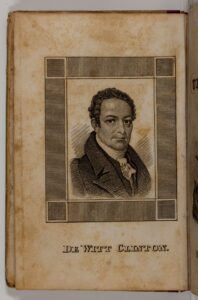 (Portrait of DeWitt Clinton, 1830.)
(Portrait of DeWitt Clinton, 1830.)
The Lancasterian system of education (now more commonly referred to as the Monitorial system) was a system of education popularized by Joseph Lancaster (1778-1838). The system relied on students to educate other students – a small number of adult masters would oversee the education, while students who mastered a topic were enlisted to help their less advanced peers. The system was cost-effective and efficient. Clinton was a dedicated proponent of free and accessible education in New York, and the Free School Society supported the Lancasterian schools, which made it even more confusing why this mysterious undated address was seemingly calling for less funding for the schools and less payment for the teacher.
The missing piece of the puzzle that I discovered through my research was the existence of the Common School Fund. By searching the AAS catalog, I found a legal memorial from the Free School Society published in 1823 that detailed the purpose of the Common School Fund (catalog record link here). According to the memorial, the fund was established in 1813. At the time, the New York legislature decided that the money in the fund should “be applied exclusively to the payment of teachers, and to no other purpose whatever.”
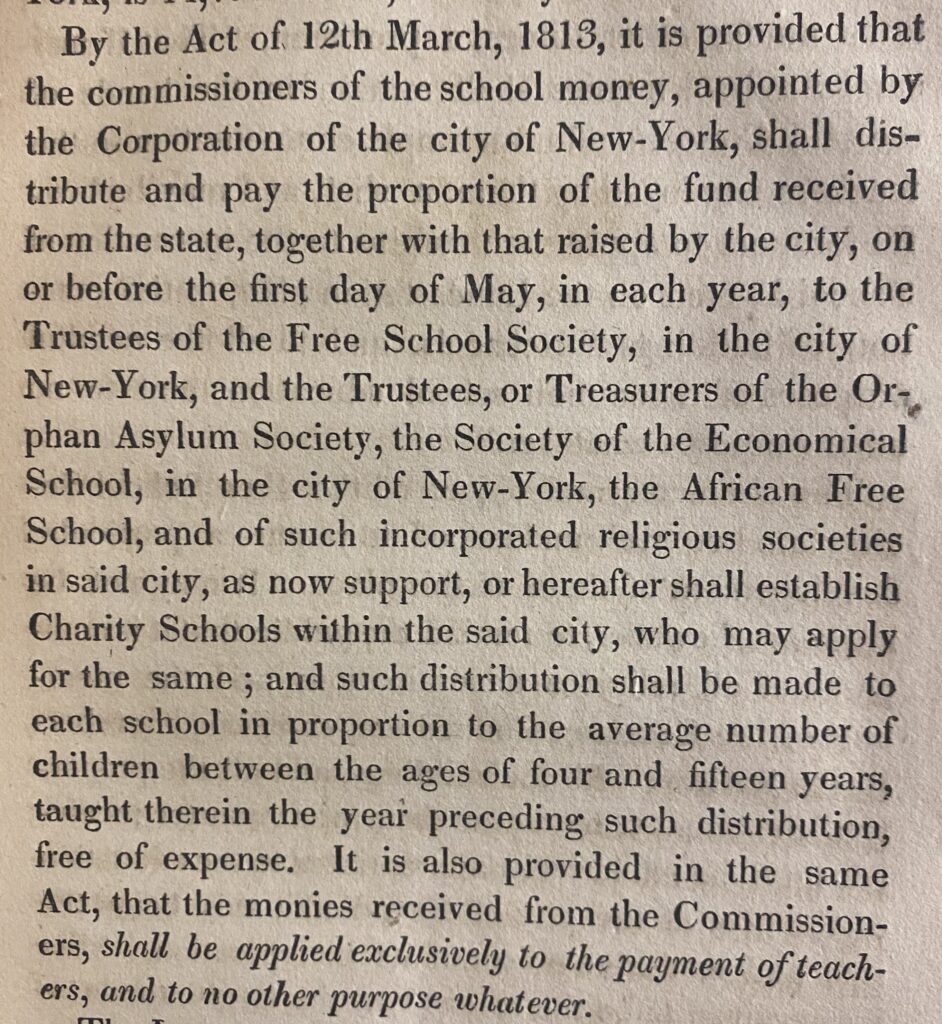 (Information on the Common School Fund.)
(Information on the Common School Fund.)
With this knowledge, the Clinton document started to make sense. Because the Lancasterian schools relied on students to educate their peers, there were fewer teachers who needed pay, meaning that the Common School Fund money allotted to pay teachers at Lancasterian schools was equal to “the pay of ten ordinary ones,” as Clinton wrote in the address. Clinton was asking the legislature for a reallocation of the Common School Fund to include funding for school buildings, textbooks, and even lower application and enrollment fees for students of Lancasterian schools.
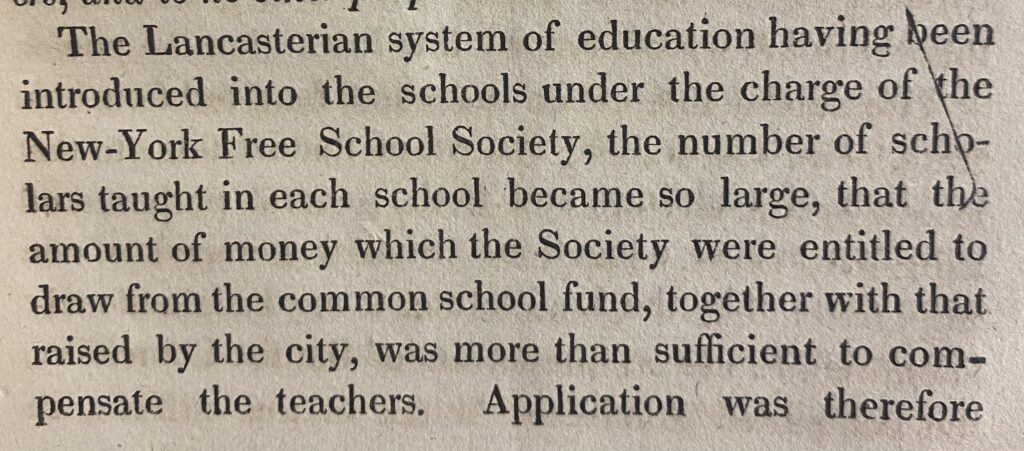 (Reasoning for the reallocation of funds.)
(Reasoning for the reallocation of funds.)
The 1823 memorial states that on April 5, 1817, the legislature passed an act containing a provision to grant Lancasterian schools the ability to use their excess funding for “the erection of buildings for schools, and to all the needful purposes of a common school education” – of course, after teachers had been granted “ample compensation.”
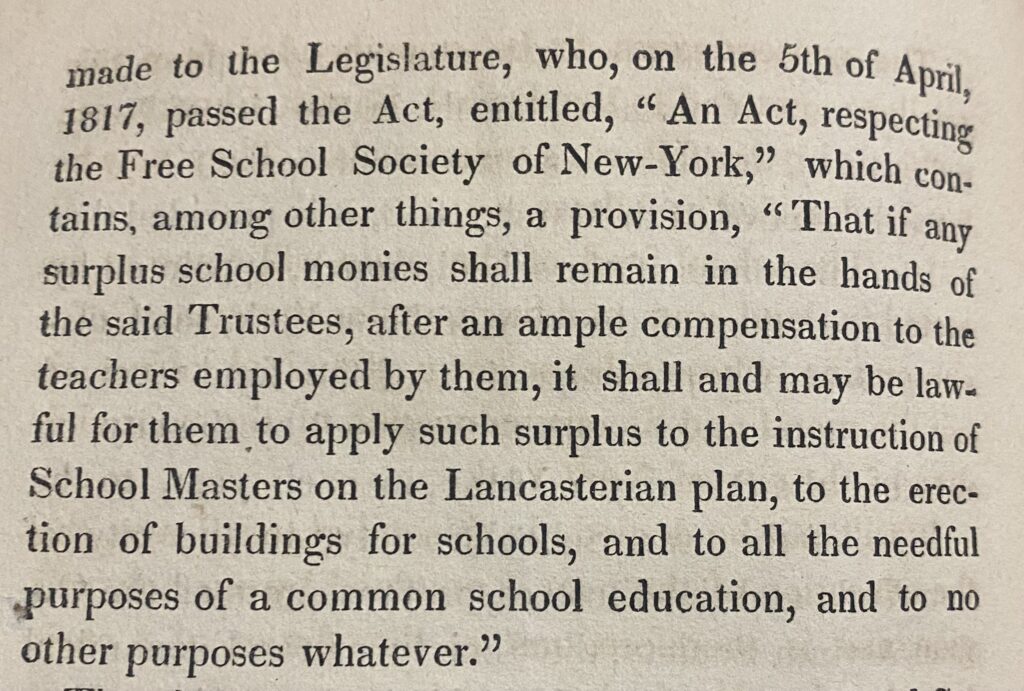 (Information on the reallocation of funds.)
(Information on the reallocation of funds.)
After finding this date, I was able to finish describing the document before me. Though I didn’t know the exact date that Clinton delivered this address to the New York state legislature, I knew it must have been around the time that the act was passed. By using our catalog to find related collection materials, I put together the puzzle pieces and learned a lot more about early systems of education than I ever expected.
Sources:
https://catalog.mwa.org/vwebv/holdingsInfo?bibId=253148

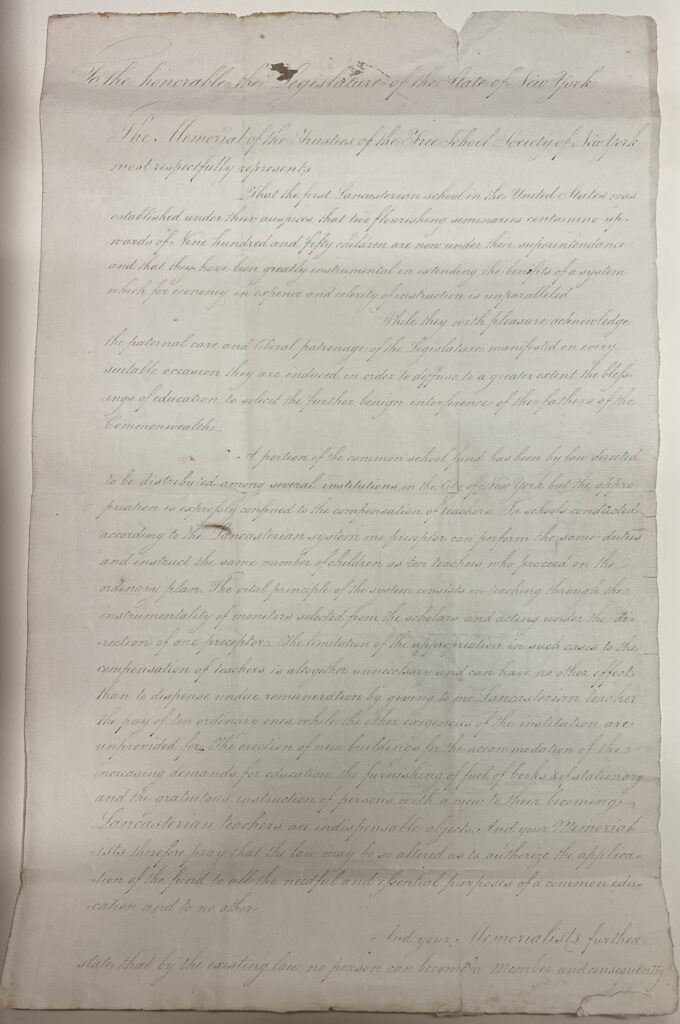
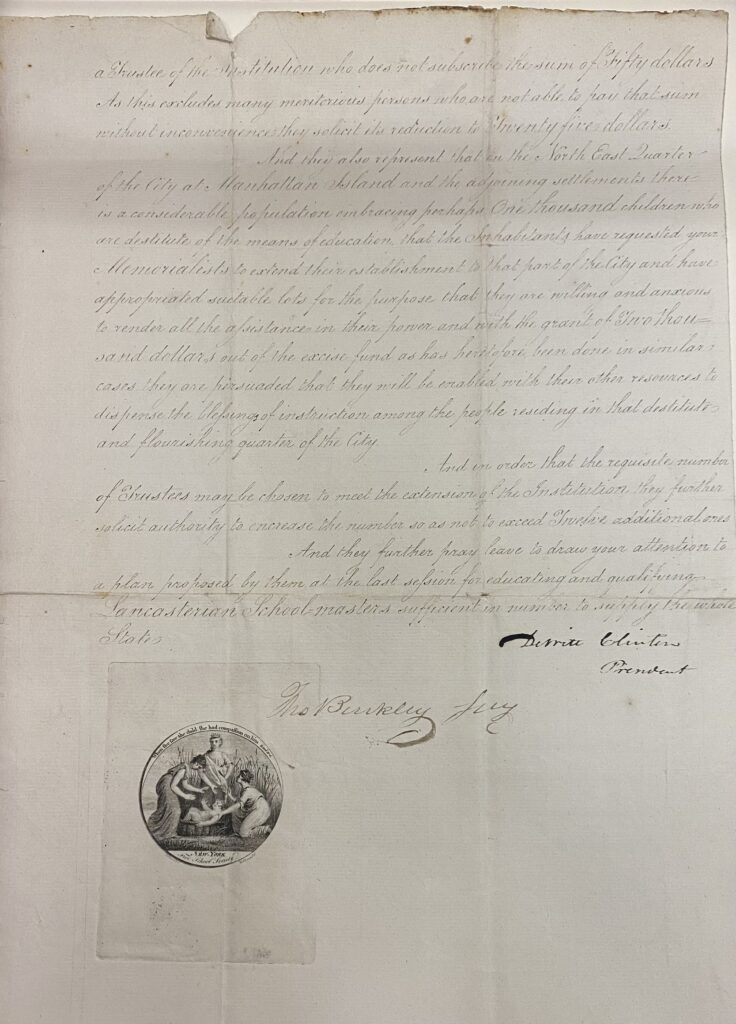
Great sleuthing on your part. I love a good mystery of history tale. Well done.